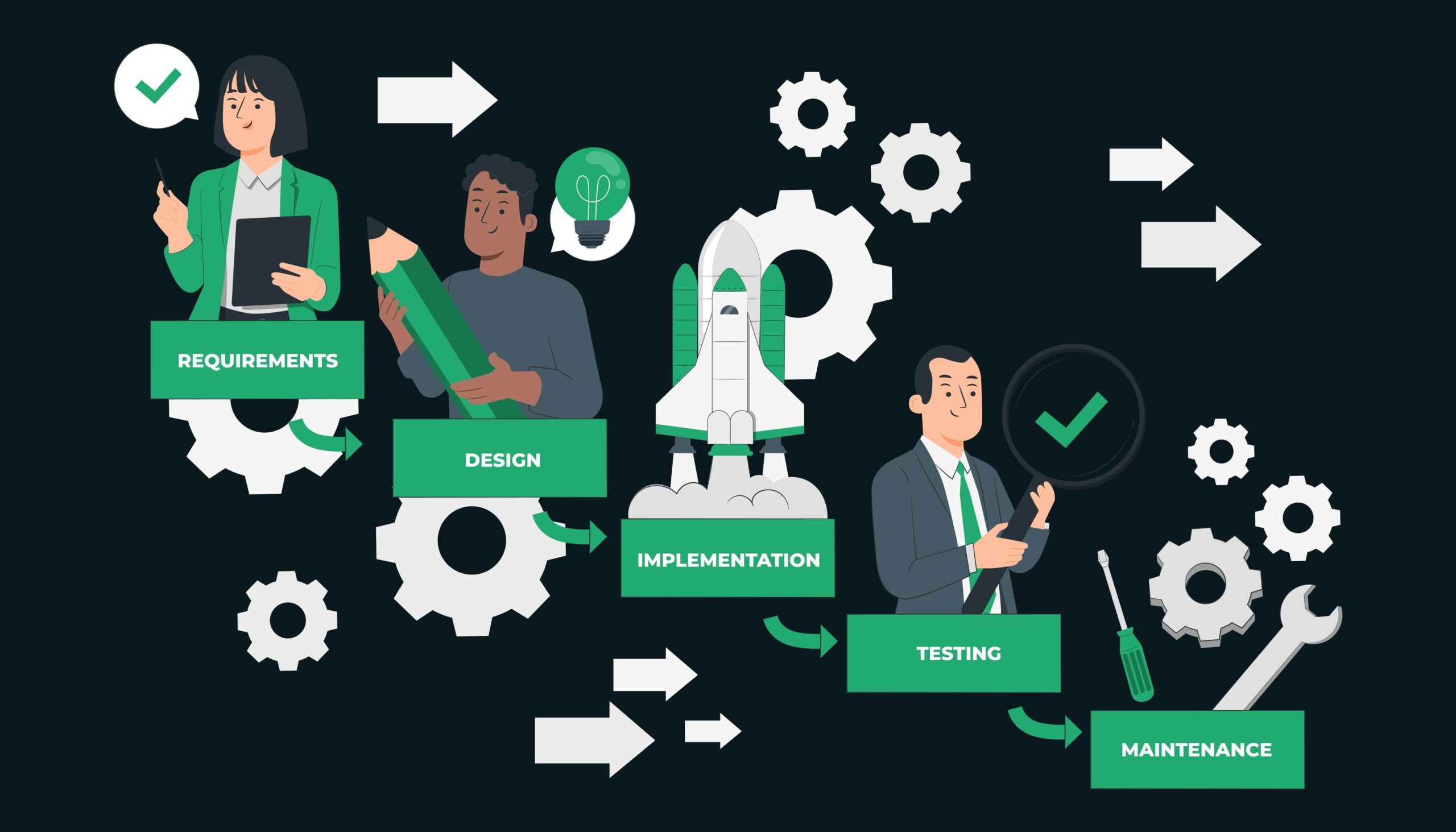What exactly is the ‘Waterfall Model’?
The waterfall model is a traditional paradigm used in the system development life cycle to design a system in a linear and sequential manner. The model is called a waterfall because it progresses methodically from one phase to the next in a downward direction. This model is structured into phases, with the result of one phase serving as the input for the next. Every step must be completed before moving on to the next, and no phases may overlap.
The waterfall approach is divided into seven distinct stages:
- Requirements: Potential project requirements, timeframes, and guidelines are examined and incorporated into a functional specification. This stage deals with project definition and planning without naming particular methods.
- Analysis: The system specifications are examined in order to produce product models and business logic to guide manufacturing. This is also the point at which financial and technical resources are evaluated for viability.
- Design specifications: are documents that specify technical design requirements such as programming languages, hardware, data sources, architecture, and services.
- Coding/Implementation: The source code is created by utilizing the models, logic, and requirements specified in the preceding steps. The system is often planned as smaller components, or units, before being executed as a whole.
- Testing: This is when quality assurance, unit, system, and beta tests are performed to identify any flaws that need to be addressed. This might result in a forced repetition of the coding step for debugging. The waterfall continues if the system passes the tests.
- Deployment: The product or application is considered fully functioning and is deployed in a live environment.
- Maintenance: is performed endlessly to improve, update, and enhance the final product through corrective, adaptive, and perfective maintenance. This might involve the release of patch updates or new versions.
The Benefits of the Waterfall Model
While agile or dynamic approaches frequently replace the waterfall paradigm, they have the following advantages:
- The use of upfront documentation and planning phases enables big or changing teams to stay informed and work toward a unified goal.
- Structured and disciplined organization.
- Is easy to grasp, follow, and organize tasks.
- Allows for departmentalization and administrative control based on a timetable or deadline.
- It reinforces excellent coding habits, such as defining before designing and then coding.
- The waterfall method is best suited for projects with detailed documentation, specified needs, enough resources, a well-defined timetable, and well-understood technology. Joint application development (JAD), rapid application development (RAD), and sync-and-stabilize are all alternatives to the waterfall methodology.
- Allows for easy early design or specification adjustments.
- Milestones and deadlines are clearly defined.
- The waterfall model’s disadvantages.
The waterfall model’s downsides often revolve around the risk associated with a lack of revision, such as:
- Design is not adaptable; when a defect is discovered, the entire process must be restarted.
- Ignores the possibility of receiving mid-process user or client input and changing based on the results.
- Testing is postponed until the conclusion of the development life cycle.
- Does not take into account mistake rectification.
- Requests for revisions, scope adjustments, or updates are not handled effectively.
- Reduces efficiency by preventing process overlap.
- Until the final phases of the life cycle, no functioning product is accessible.
- Not recommended for complicated, high-risk, continuing, or object-oriented applications.
The bottom line:
Besides all the disadvantages and risk factors, our professional team of developers at Zenkoders considers using the SDLC Waterfall Model in the following circumstances when required by the client:
- When the criteria are consistent and do not change on a regular basis.
- A project is brief.
- The problem is under control.
- When the tools and technologies employed are constant and do not change.
- When resources are fully prepared and ready for usage.


